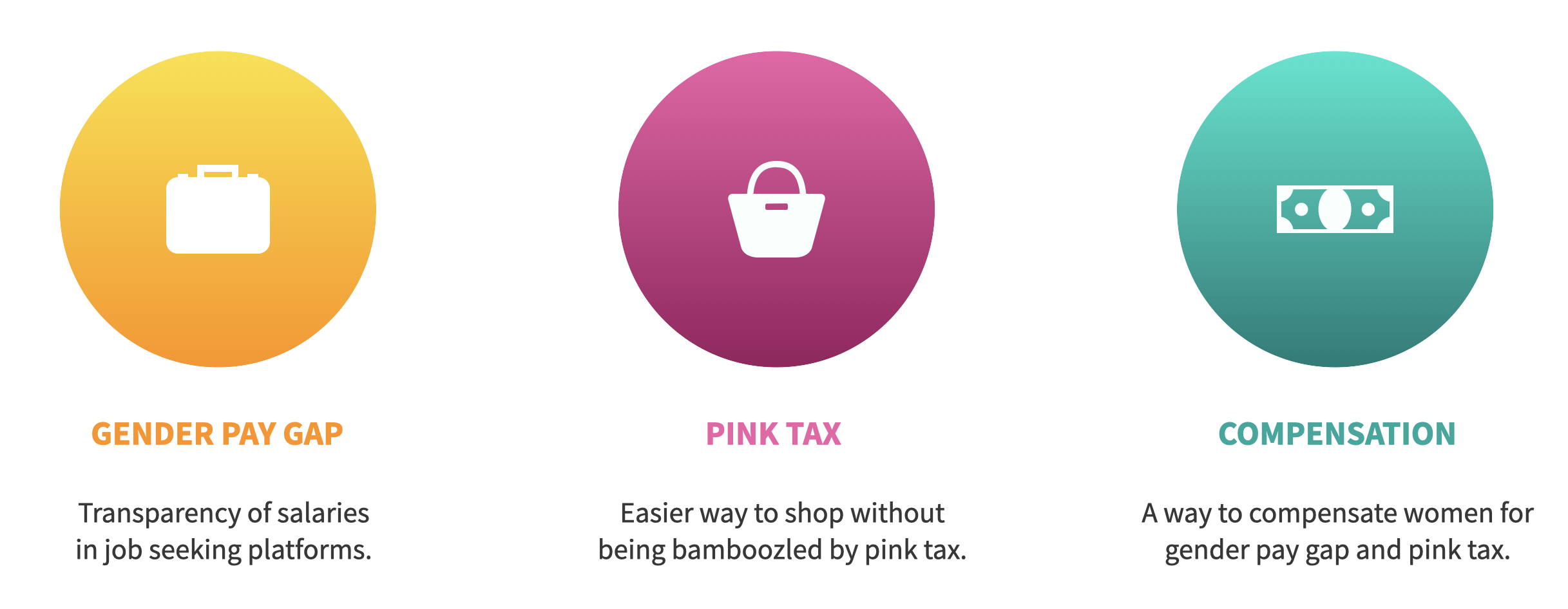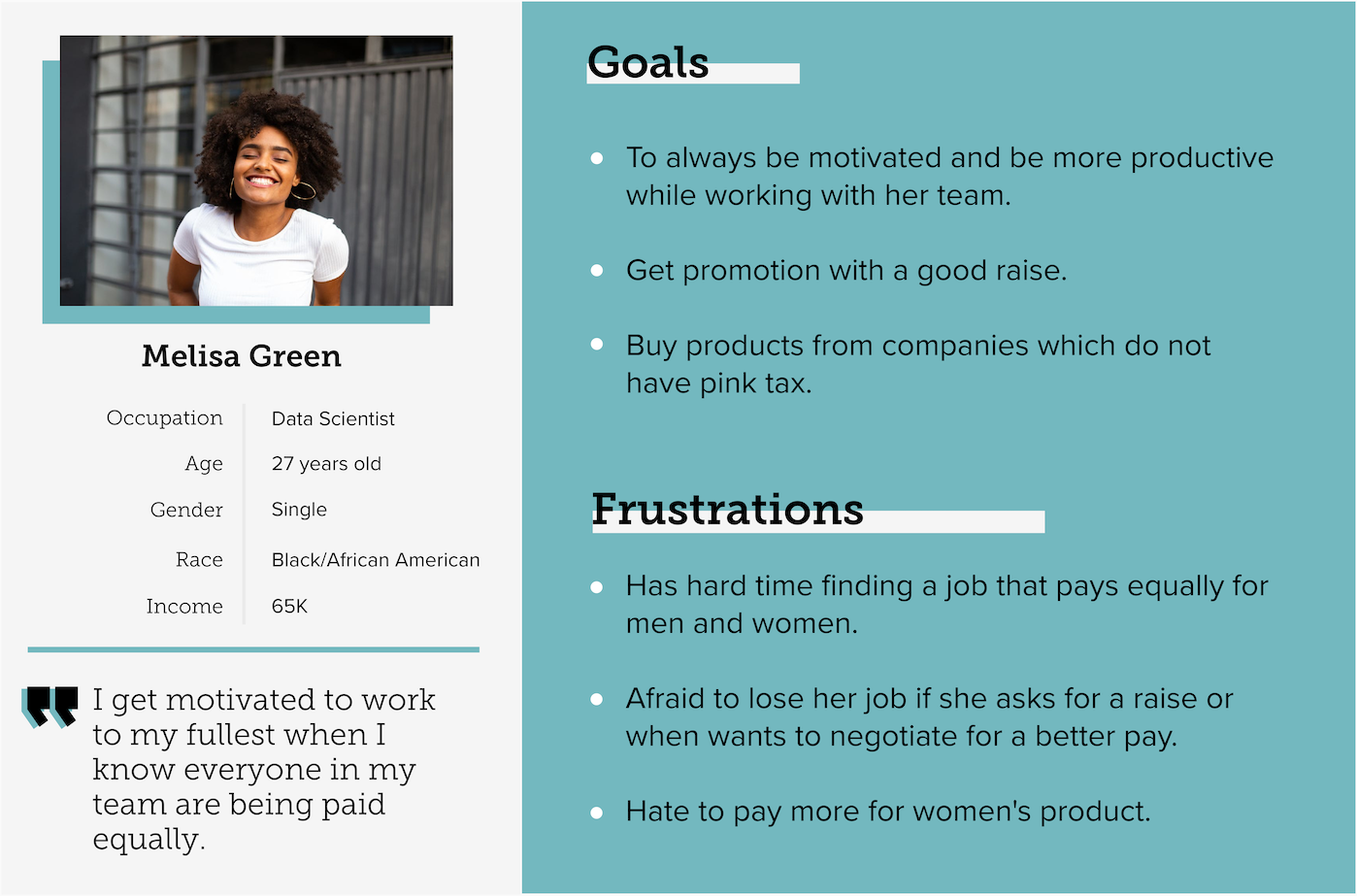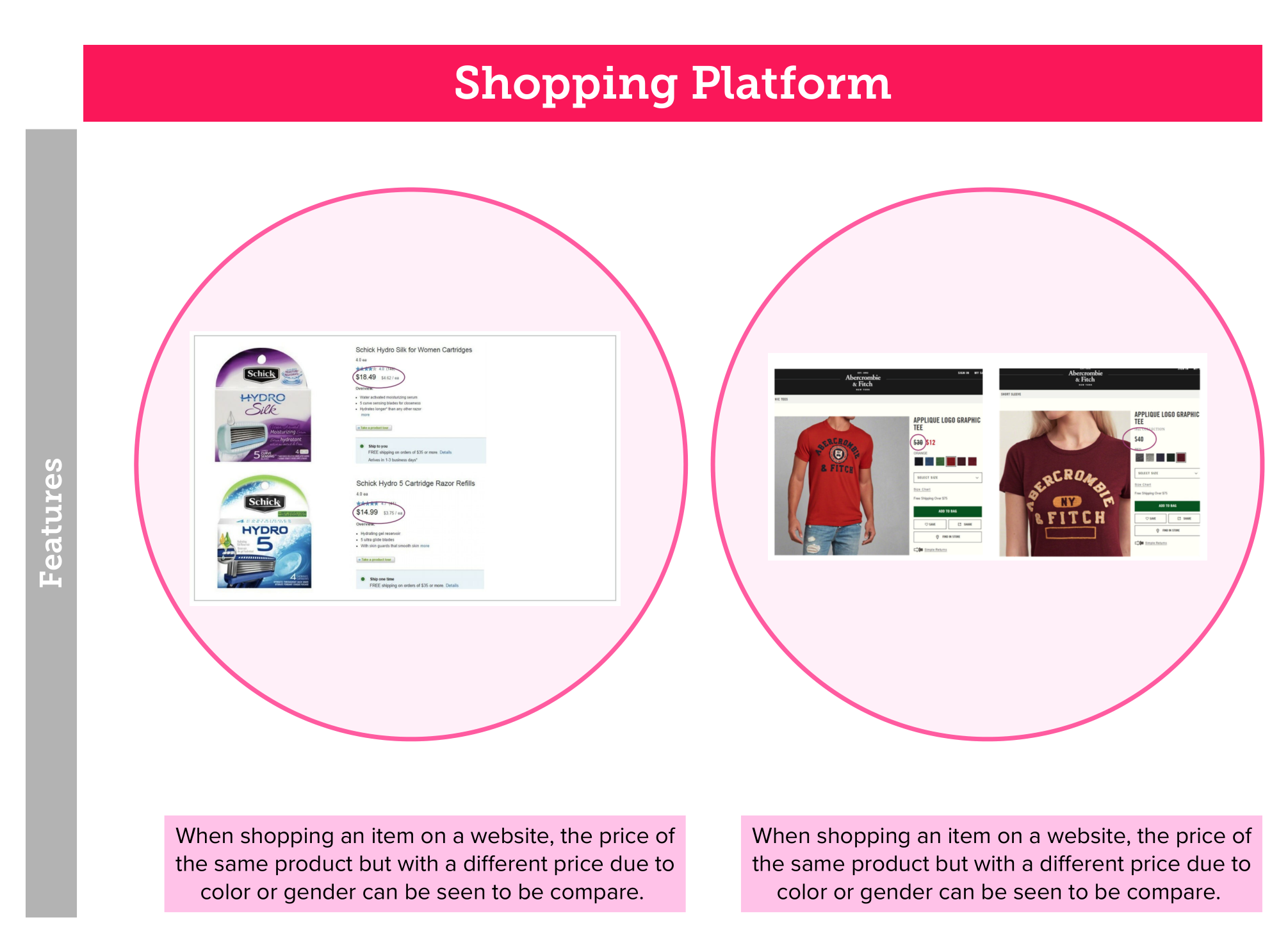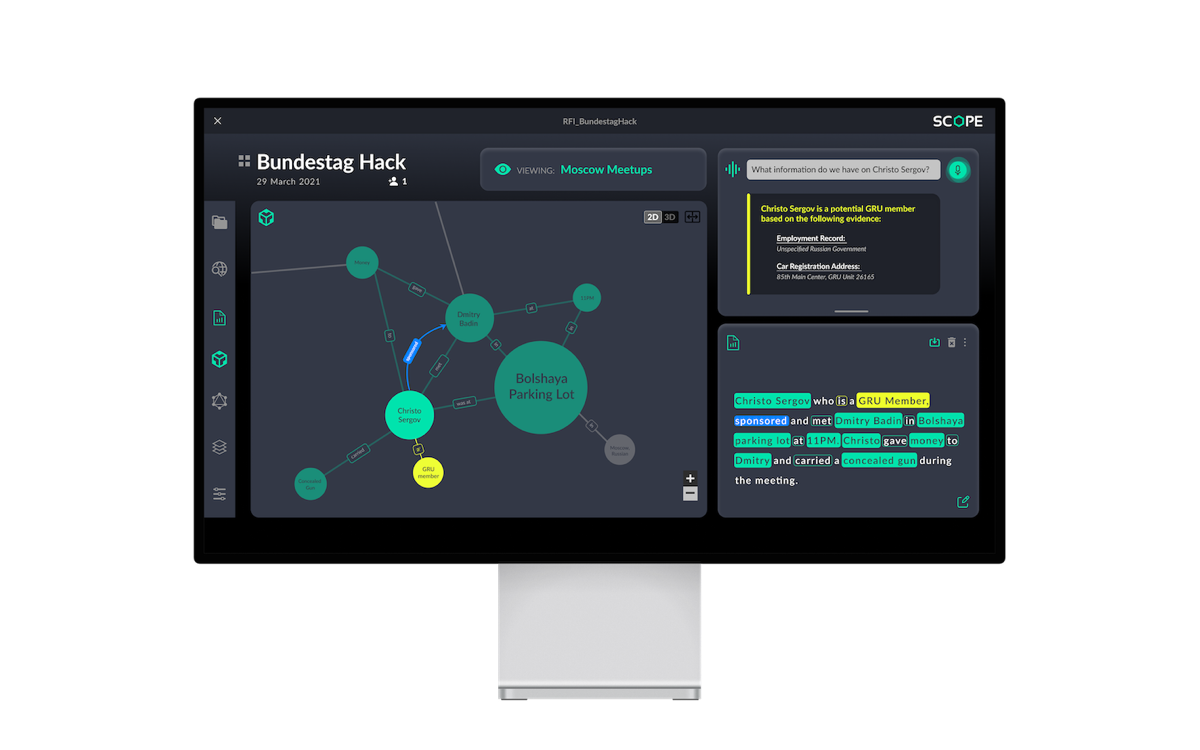EQO Browser Extension
Gender Pay Gap and Pink Tax Investigation

Overview
Fall 2020 NCSU
In this self-generated project, I wanted to find out what design experience is best for users to expose them to the inequality in women's rights in workplaces that gives them an opportunity to gain a broader view of the topic.
Throughout my investigation, I focus on the Gender Pay Gap and Pink Tax that discriminate against women financially.
Product
Extension Browser to Fight the Inequality of Gender Pay Gap
My Role
Researcher and Designer
Team
Solo
Duration
4 weeks
Solution
The EQO (Equality in Economy) browser extension is designed with the goal to bring awareness about the problem women are facing financially.
With the help of this plugin, women can:
- Look and compare salary when job seeking.
- Shop efficiently without worrying about Pink Tax.
- Get coupons and discount as a compensation of these inequalities based on their race and gender with the help of an AI system.
See the full process of this project in Mural here.
Final Design
Goals
- Design a user-friendly model that can bring awareness about the inequality in women's rights workplaces.
- A design that has transparency about Gender Pay Gap and Pink Tax data.
- Easier way to shop without being bamboozled by pink tax.
- A way to see and compare the salary of companies based on their employee gender.
- Investigation the gender pay gap and pink tax by designing different studies or social experiences.
Challenges
- There is a taboo on discussing salaries in the United State.
Research
Research on Inequality in Women's Rights in Workplaces
To get started, I research on the inequality of women’s rights in workplaces. I focus on the financial aspect of it.
My research consisted of mainly on knowing more about the history of women in workplaces, the gender pay gap and pink tax. I also wanted to find out what did design do to bridge the gap?
From the information that I collected, I decided to come up with innovative ideas (mini studies) to understand what kind of solution is best to come up for the final design. In this way I was able to open up more my mind and not be fixated on one solution.
In the following, I showcase some of the mini studies that I came up to bring awareness about the inequality women who are facing financially.
Mini Study 1
Woman's Day Shopping
International Women's Day reminds us all of the gender inequality that affects many of us every day.
Normally we don't see directly the effect of the gender pay gap in our daily life.
The below mockup is one way to expose people to the gender pay gap topic. In the mockup we see one page of Target online grocery list.

The price in black color is the price you see normally on the website. But in honor of women's day/month along with the normal price, Target shows the real price that women need to pay (in red) to get the same product compared to men's price based on their gender pay gap from their location.
Mini Study 2
Gender Bias Game
With games we can showcase the problem of the gender pay gap by introducing female and male players doing the same task but gaining different rewards just based on their gender.
The below mockups are some game ideas that can be used to show the gender pay gap problem.

Mini Study 3
Subway Social Experiment
In this mini study I designed a social experiment on the gender pay gap problem in a metro station.
Social experiments can show us a new perspective with raw, pure reactions while being interactive and engaging, a social experiment usually works by setting up a scenario and inviting members of the public to unwittingly interact with the experiment, meaning they’re more likely to give their most honest and raw opinions.

Mini Study 4
Employee Salary Based on Gender
Where do you search to find a job? What platform does have job posting? LinkedIn, Glassdoor, Indeed and etc.
These platforms have a salary section where you can find a salary estimation of a job title in general or in each company. What is missing is to see employee salary based on gender. It might not be mandatory in the US for companies to report each year the gender pay gap. But it would be great if people leave a comment about their salary on these platforms and then these platforms can use the data and make a subsection in the salary section to compare male and female salaries in a specific company or in general.

Develop
What is missing and what do we need?
Based on the research and my ideations and interviews with some women who get paid, I found out that if I want to come up with a solution, the design model needs to address these elements:
- To show transparency of salaries in job seeking platforms.
- To make shopping easier for women without worrying about higher price for the same product as men due to the pink tax.
- To have a system that can compensate women because of the gender pay gap or by race pay gap.

Persona

Storyboards and Sketchs



Design
Solution
Since there is a taboo on discussing salaries in the United States, it is hard to get information on people’s salaries.
One way to get this information is for people to share their salary anonymously on job seeking platforms like Glassdoor or Linkedin. These platforms have a salary section where you can find a salary estimation of a job title in general or in each company.
What is missing is to see employee salary based on gender. It might not be mandatory in the US for companies to report each year the gender pay gap. But it would be great if people leave a comment about their salary on these platforms via a plugin (EQO) and then the plugin can use the data and make a subsection in the salary section to compare male and female salaries in a specific company or in general.

Shop efficiently without worrying about Pink Tax.
The plugin can help users to compare the price of two similar products that have the same ingredients but with different color packaging (normally one is pink for women) from one brand. In this way, users can avoid shopping from brands that use the pink tax if they want.

EQO plugin applies discounts for users based on their gender and race as a compensation. For that it uses an AI face detection system.
If the AI system detects the users wrongly, users can adjust their parameter in the setting. The system let the users know why they got this discount. I believe this is another way to inform the gender/race pay gap problem.

Deliver
EQO Plugin
EQO stands for Equality in Economy. The main objective of this plugin is to bring awareness about the gender pay gap and pink tax problem that women are facing everyday. The hope is for us to be in a place where we don’t need something like this plugin to try to bypass these inequalities.

Uh oh, you have reached the end of this case study!
Do not worry! I have other projects that are waiting for you to check them out!
Thank you for your time and see you in the next project :)



